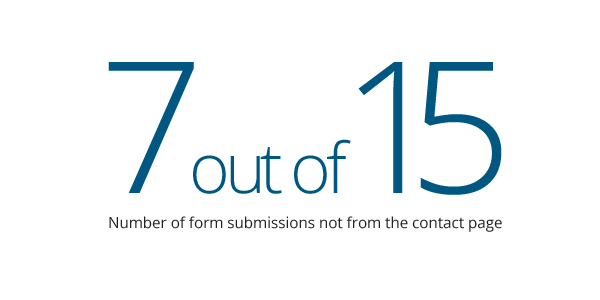- Backlinks Explained: Why Your Backlinks Aren’t Paying Off - April 10, 2024
- Boost Your Agency’s Credibility: A Guide to Online Reputation - April 10, 2024
- URL Slugs for SEO: A Comprehensive Guide - April 10, 2024
There’s nothing worse than seeing a long blog post with paragraphs and paragraphs of text. Who wants to read that? Most readers aren’t readers, they’re skimmers, looking for bits and pieces of information. Don’t make skimmers read through long boring paragraphs just to find one tiny piece of information. A skimmer will take one look at your long blog post that’s full of paragraphs, shake their head, and bounce; hence the term “bounce rate“. That being said, here are 8 ways you can make your blog posts more visual.
1. Image Quotes
One of my favorite things to do is quote people. It’s an excellent way get your point across, and an important way to communicate the thoughts of a great mind. So don’t hide that quote in a giant paragraph of text from people who are skimming your blog post. Break it out!
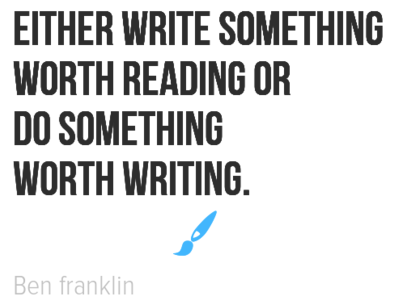
For example, let’s say you wanted to quote Ben Franklin and say, “Either write something worth reading or do something worth writing”. You could only write it in your paragraph of text, or you could also display a giant image of the quote next to or below the paragraph of text.
Behappy.me has an easy and free image quote maker. In fact, I generated the quote to the right using their free tool.
2. Make your images circular
Of course using images is always great, but by making those images circular you can make you posts a little more fun and creative, while breaking things up for skimmers. Plus using round shapes is more feng shui because circular objects evoke clarity, freshness and equality. Over all, your post will have a better energy and give your skimmers a better vibe while skimming. See my example below.
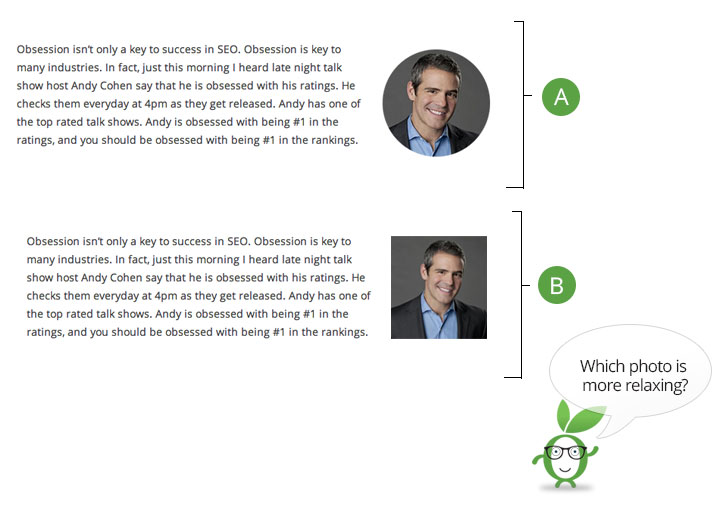
3. ALWAYS use a featured image
Every single blog post should have a featured image to grab the skimmer’s attention. The featured image should be about 50% of the column and right aligned. If done right the laws of visual hierarchy will cause your reader to see the image first, then your title and finally the content below.
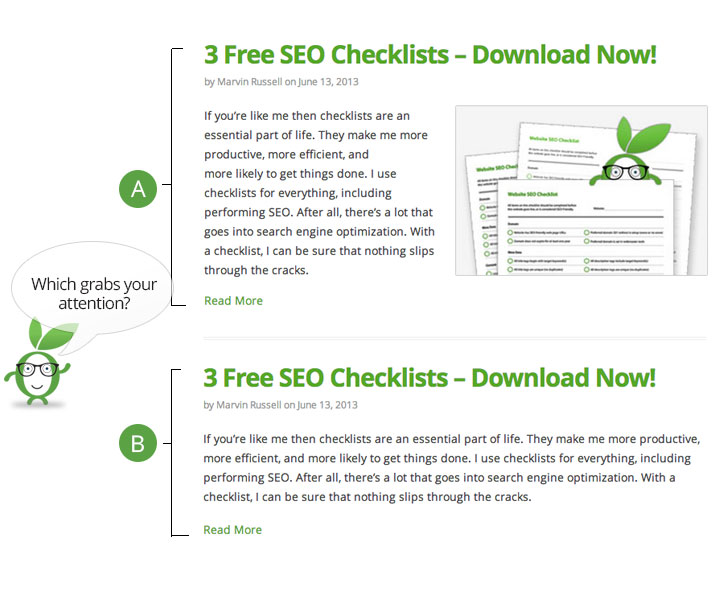
4. Bullets
Any time you can break up information into bullets or numbers, do so. The skimmers will love you and come back for more. Look at the example below. Which is easier for you to read?
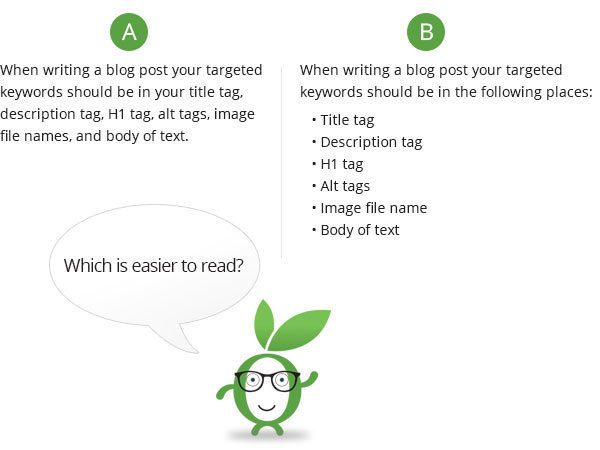
5. Giant images of stats
Stats are great for blog posts, but not so perfect if skimmers can’t find them easily. Rather than make skimmers read every word of your long post, make that stat stand out by turning it into a large image.
In a recent post called, “5 Reason Your Visitors Don’t Fill Out Your Contact Form“, I wanted to communicate why it’s great to have lot’s of different contact forms throughout your website. So, instead of making my skimmers find that 7 out of 15 contact forms submitted to The Ocean Agency were not from the contact page, I show them the image below. (photoshop)
6. Bold, underline and italicize
Sometimes we need to write paragraphs and can’t (for what ever reason) use an image, bullets, or video. When this happens, at least bold, italicize, or underline the important parts of the paragraph. This will appease the skimmers and also make search engines very happy. Search engines will see that you’re emphasizing certain keywords to users, so in-turn they will rank you higher for those keywords.
7. Embed a video
Before you post that next article, do a quick search in YouTube and see if there are any videos you can embed to help communicate your point. If not, pull out your iPhone and shoot a 30 second video of yourself like so…
8. Add an author image in your byline
People connect with people, not text. End or begin your blog post by connecting with your reader or skimmer. You can easily do this by adding an image to your author byline, and make it a big and friendly image. Not only will this make your blog post more visual but it will help you connect with your skimmers as well.
The Moz Blog does a great job of sticking their author’s image at the beginning of each post. This really helps skimmers connect with the writers.

Conclusion
Your blog is not a book, and most of your readers aren’t readers, they’re skimmers, who are skimming for information. So write your blog posts for skimmers because your readers won’t mind. But your skimmers will mind and “bounce” if you write only for readers.
Sayōnara, Auf Wiedersehen, au revoir!

